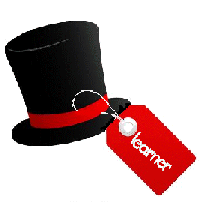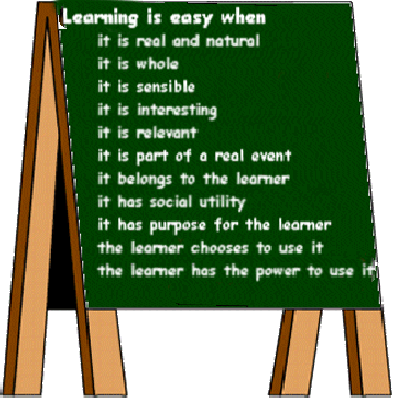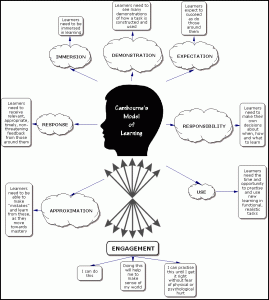 The first and foremost role of the teacher librarian is that of teacher, so having understood the learners and answered the questions, it is essential to consider what that means for me as a teacher.
The first and foremost role of the teacher librarian is that of teacher, so having understood the learners and answered the questions, it is essential to consider what that means for me as a teacher.
Explicitly examining and articulating what shapes my knowledge, understanding, attitudes and values allows me to reflect on my beliefs and use these to build a solid platform on which to build my future teaching. It enables me to know that what I offer and do is built on firm foundations of best-practice pedagogy and practice and it can be offered with authority and competence. This is my educational philosophy…
| As a teacher I believe.. |
| Our brains grow and change from conception to death |
| Intelligence is not fixed so we can all learn new things |
| Learning is easy when- |
| we want to learn |
| we need to learn |
| it is connected to our lives |
| it starts from a place we know |
| it’s real |
| it helps me understand the world around me |
| Learners need |
| a purpose for learning |
| demonstrations |
| immersion and practice |
| feedback |
| to have ownership of their learning |
| It is my responsibility to make sure I make learning easy for students by |
| accepting each student for who they are and where they are at |
| providing a safe and secure environment so students can learn in peace and in confidence |
| identifying what I want students to know, do, understand, appreciate and value as a result of my teaching |
| connecting what they already know to what they are about to learn |
| determining their level of achievement so I can offer appropriate feedback |
| enabling each student to have ownership of their learning |
| demonstrating the purpose and relevance of their learning to their world |
| encouraging each student to take responsibility for their learning |
| creating opportunities for each student to reach their potential |
| I will continue to grow as a teacher as my experience and expertise develops |
From this I have developed a manifesto which explicitly states who I am as a teacher librarian and ensures that all the philosophies, pedagogies, programs and practices I adopt are in alignment with both my beliefs and my goals.
| As a teacher librarian I will |
| know understand and value the needs of teachers in designing, developing and delivering the curriculum |
| know, understand and value the needs, interests and abilities of the students and design, develop and deliver information and resources in a variety of formats to meet those needs |
| support teaching and learning by providing access to ideas, information and resources which enrich and enhance the curriculum |
| support lifelong learning by providing intellectual, physical and digital access to ideas, information and resources |
| recognise and understand that the information landscape is changing and provides ideas, information and resources in a format that users want need and expect |
| understand and use the power of Web 2.0 technologies to support teaching and learning |
| enable staff and students to understand and use the power of Web 2.0 technologies to enrich and enhance their teaching and learning |
| understand and use user’s suggestions and feedback to continuously evaluate what is offered and make changes based on their needs and my professional knowledge |
| understand and provide access to the ideas, information and resources that are valuable to and valued by this community |
| seek opportunities to consult and collaborate with staff, students and colleagues to ensure services and resources are user-centred and user-driven |
| understand that today’s users are information creators as well as information consumers and support their endeavours to do this |
| embed inquiry learning, information literacy and digital technologies across the curriculum |
| create and contribute to a community of learners based on conversation, consultation, collaboration and co-operation |
| seek new, effective and efficient ways of delivering information, resources and services and embrace evidence-based changes to established practices |
| advocate and validate the role of the teacher librarian through my attitudes, attributes and actions |
| create connections between the library’s users and the people and things they want. need and expect to know |
| change the concept of the library from bricks-and-mortar to brick-and-click by embedding the digital world into the collection |
| embrace and demonstrate the teacher librarian’s joint roles of curriculum leader, information specialist and information services manager |
| strive to demonstrate and uphold the Standards of Professional Excellence for Teacher Librarians and the School Library Bill of Rights |
Beginning with the end in mind by focusing on my beliefs and goals is essential for it means no matter how attractive the hat, if it is a poor fit and doesn’t suit my style I won’t wear it and it will languish in my wardrobe.




